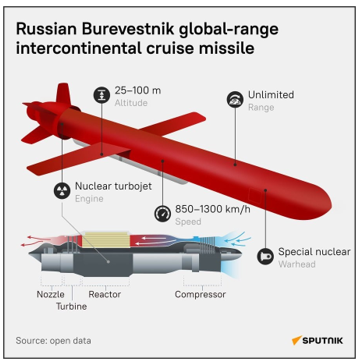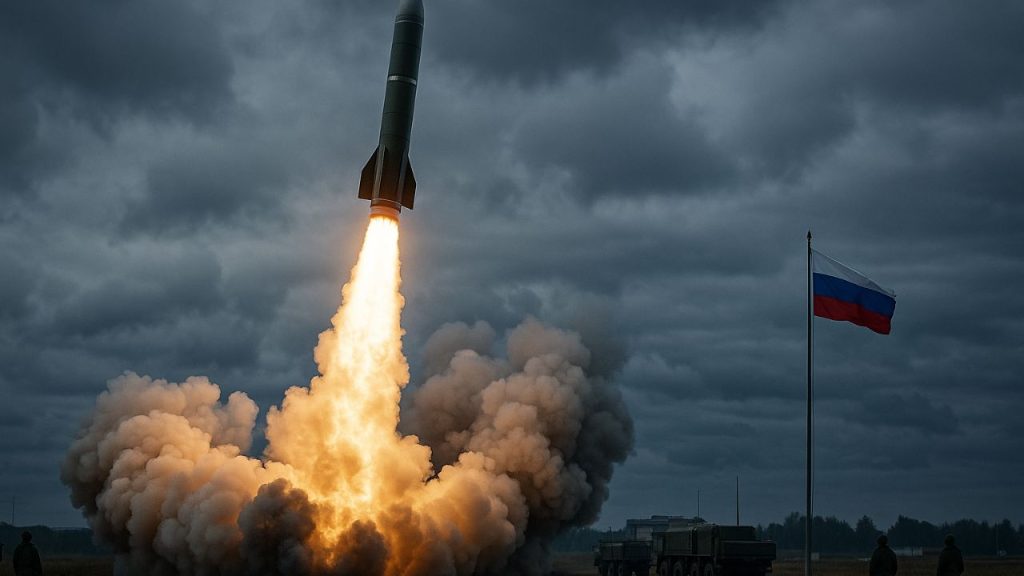SYLLABUS
GS-3: Awareness in the fields of IT, Space, Computers, robotics, Nano-technology, bio-technology and issues relating to intellectual property rights.
Context:
Recently, the Russian President announced the successful completion of the final test of the Burevestnik, a nuclear-powered cruise missile.
More on the News
- The 9M730 Burevestnik missile, also known as “Storm Petrol” and designated by NATO as SSC-X-9 Skyfall, is described as a unique strategic weapon with no equivalent in the world.
- The missile successfully flew for about fifteen hours, covering a distance of nearly 14,000 kilometres.
- The test demonstrated Russia’s ability to maintain long-range, low-altitude flight with high precision, signalling a new stage in its nuclear deterrence capability.
About the Burevestnik Missile

- The Burevestnik is a ground-launched, nuclear-powered cruise missile developed by Russia’s Ministry of Defence to achieve an intercontinental range between 10,000 and 20,000 kilometres.
- The missile combines nuclear propulsion and nuclear warhead technology, granting it an ability to evade advanced anti-missile systems through unpredictable flight paths.
- Unlike conventional Inter-Continental Ballistic Missiles that follow predictable space trajectories, this missile maintains a low altitude of 50 to 100 metres and frequently changes its path to avoid detection.
- The propulsion system likely uses a traditional engine during launch and activates a compact nuclear reactor mid-flight to superheat air for sustained propulsion, significantly extending endurance.
- The Burevestnik forms part of Russia’s advanced nuclear arsenal alongside the Poseidon nuclear torpedo, strengthening its second-strike and strategic deterrence capabilities.
- The Burevestnik is one of six strategic weapons unveiled by Putin in 2018 as part of Russia’s new nuclear arsenal.


